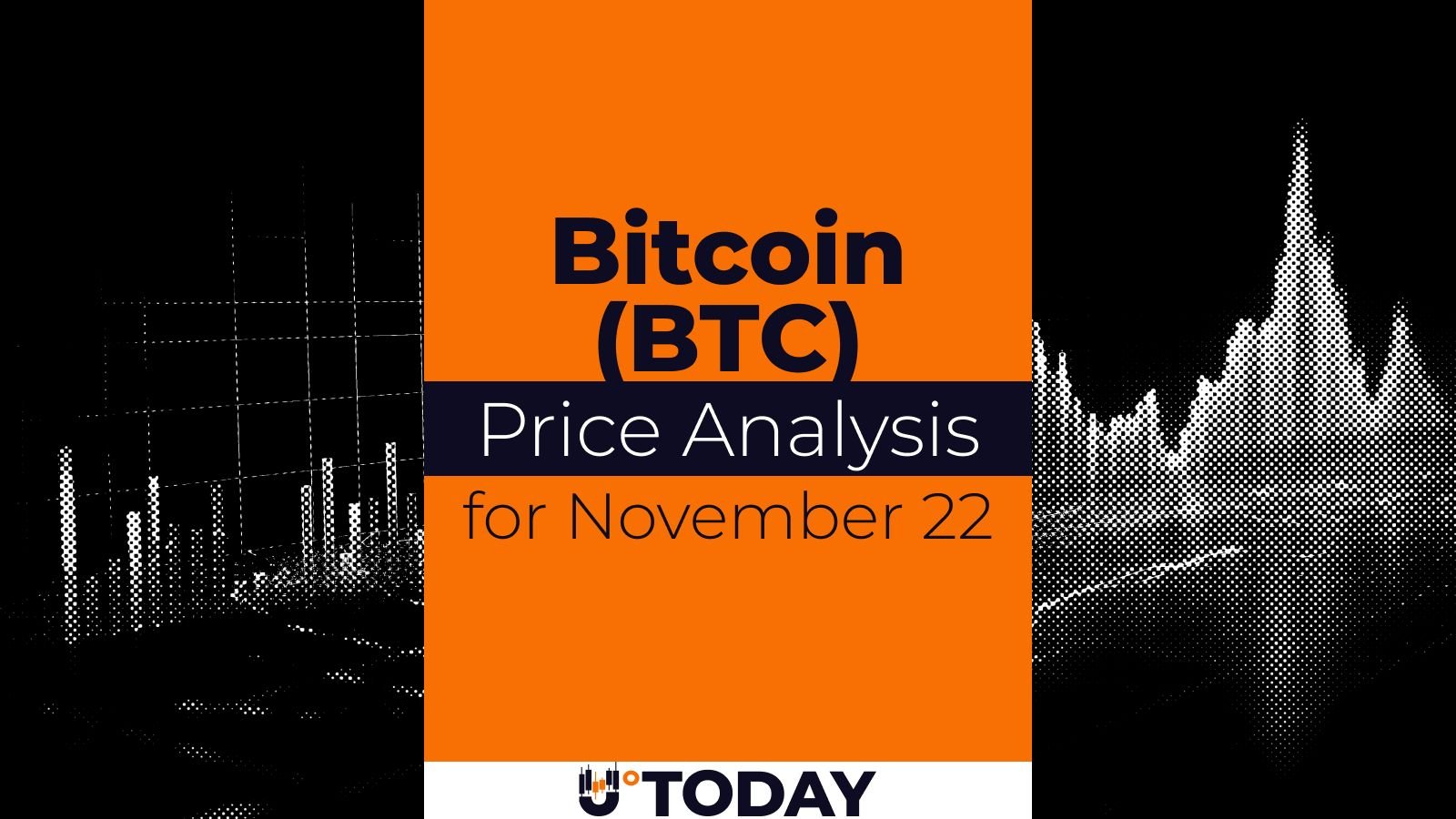You see a coin doubling overnight, influencers hyping it nonstop, and everyone on your feed posting green screenshots. The pressure is building up: should you jump in before it’s “too late”? That creeping urgency, that fear of missing out, is one of the biggest psychological traps in crypto. In this guide, we’ll tell you everything you need to know about crypto FOMO and some strategies for countering it.
What Is Crypto FOMO?
Crypto FOMO (short for “Fear of Missing Out”) is the anxious feeling that others are making money in crypto while you’re being left behind. It often leads to impulsive investment decisions driven by emotion rather than logic or research.

In the context of crypto, FOMO typically kicks in when prices start to surge, coins trend on social media, or people share stories of overnight profits. You might feel pressure to buy in quickly so you don’t “miss the next big thing.” But this mindset often leads to buying at inflated prices or investing in projects you don’t fully understand.
Why FOMO Is Stronger in Cryptocurrency Markets
Unlike traditional markets, crypto trades 24/7, moves fast, and lacks clear fundamentals in many cases. That makes it easier for FOMO to take hold, and harder to resist it.
Volatility is another key factor. It’s common to see double-digit price swings in a single day, which creates constant opportunities to feel like you’re missing out. When prices pump suddenly, social media amplifies the hype, fueling a sense of urgency to act now or regret it later.
The culture around crypto also plays a role. The industry celebrates fast gains, viral coins, and overnight millionaires. Many projects rely on marketing, influencers, and online communities to drive demand, which further distorts the line between real value and speculative buzz.
Add to that a younger, more risk-tolerant investor base, and the fear of missing out becomes more than just emotional—it becomes baked into how the market behaves.
Key Triggers of Crypto FOMO
Crypto FOMO doesn’t appear out of nowhere: it’s typically triggered by specific patterns in the cryptocurrency market and the behavior of the crypto community. Unlike stock markets, crypto’s speed and visibility make these triggers more intense, often pushing people into potential investments they haven’t fully evaluated. Many of these emotional decisions can lead to significant financial losses.
Sudden Price Spikes
Sharp price increases are one of the most powerful FOMO triggers. When a coin suddenly jumps 20%, 50%, or even more in a short period, it creates a sense of urgency. The fear isn’t just about missing profits—it’s the worry that this was the “one chance” to get in early. Traders often jump in late during these spikes, buying at inflated levels with little understanding of the broader market trend.
“Everyone’s Getting Rich” Posts on Social Media
Social media plays a massive role in amplifying FOMO. Viral screenshots of six-figure gains, claims of turning $1,000 into $100,000, and memes celebrating “early investors” are everywhere during bull runs. These posts often lack context or verification, but they shape perception inside the crypto community. Seeing others (supposedly) win big can create pressure to follow blindly… without assessing whether the opportunity is real or already passed.
Influencer Endorsements and Celebrity Hype
When crypto influencers or celebrities promote a coin or project, it can drive huge waves of speculative buying. Their followers see these endorsements as validation, even if the influencer is paid or lacks technical knowledge. In many cases, this leads to price surges followed by dumps, where latecomers are left holding the bag. The illusion of insider access or early investment often masks the reality of market manipulation.
How FOMO Looks in Real Life: Common Scenarios
FOMO isn’t just a concept: it shows up in real decisions people make every day in the crypto market. These examples show how FOMO can lead to poor timing, risky bets, and missed opportunities.
Buying Near the Peak After a Big Rally
Meet Alex, who watched a mid‑cap token spike from $10 to $18 in less than a day. Thinking it had only just taken off, Alex bought in—only to see it crash back to $12 within hours.
One Reddit user had a similar experience back in 2022:
“Bought BNB at the top of the rally in Feb 21. I kid you not, the second I bought it dropped like $50. That red candle still haunts me.”
Chasing Meme Coins and Pump-and-Dump Schemes
Sophie jumped into a new meme coin after seeing Discord hype it as the “next breakout.” She watched others brag about early gains, but shortly after the launch, the price fell dramatically, leaving her with a loss.
This is an unfortunate yet incredibly common reality for many investors in the crypto world, both new and old. No matter your experience level, it’s really easy to fall for these schemes.
Selling Winners Too Early Out of Fear of Reversal
Jordan saw a major rally on Bitcoin and sold half of his holdings, worrying it was about to reverse, even though all signs suggested a longer uptrend. Soon afterward, the market continued climbing and he missed additional gains.
This is another common and very human way of reacting to crypto market trends. After all, we all know just how volatile it is, and it’s natural to expect price drops at any time.
This has always been a huge issue, with Reddit users in this 4-year-old thread describing a similar problem and ways to deal with it, such as only cashing out a portion of your crypto assets (like 10-20%) or holding out until you need life-changing money.
Why FOMO Is Dangerous for Crypto Investors
FOMO-driven decisions can seriously undermine your crypto investing strategy. When emotion overrides logic, even a promising opportunity can turn into a costly mistake. Investors who skip their own research or react impulsively to social media posts often find themselves locked into poor positions, chasing hype instead of making informed decisions.
Read more: Crypto Risk Management Strategies.
Buying High, Then Selling Low Out of Panic
A classic FOMO trap: buying into a particular cryptocurrency after a big rally, only to watch the price collapse shortly after. Without a clear entry strategy or understanding of market conditions (like interest rates or macro sentiment), panic selling at a loss becomes the exit.
Getting Stuck in Volatile, Short-Term Trades
Impulsive buying during hype cycles often leads investors into trades with extreme price swings. These short-term plays may look profitable on the surface, but in reality, they’re difficult to manage without discipline and experience. Acting on momentum instead of doing your own research increases the risk of heavy losses.
Falling for Scams and Artificial Pumps
When excitement peaks around a new token, especially through social media posts or influencer endorsements, it’s easy to mistake coordinated marketing for genuine demand. Many FOMO-driven buyers end up in pump-and-dump schemes where early insiders profit and everyone else is left holding worthless tokens.

Burning Out From Constant Price Watching
FOMO often pushes investors into obsessively checking charts, Twitter (X) feeds, and Telegram groups. This constant need for updates creates mental fatigue and emotional burnout, making it harder to make rational, long-term investing decisions.
Abandoning Long-Term Plans for Short-Term Hype
You might have a solid investing strategy… until FOMO convinces you to chase a trending coin or react to a sudden spike. Each time this happens, you move further away from your goals. Long-term success in crypto depends on discipline, not reactive behavior driven by short-lived trends.
How to Spot FOMO in Yourself
FOMO isn’t always obvious, especially when you’re caught up in fast-moving crypto markets. Use the checklist below to assess whether you’re making choices based on fear rather than strategy. If you answer “yes” to multiple questions, it may be time to pause and reevaluate your approach to potential investments.
✅ Do you feel anxious or left behind when crypto prices rise—especially if you’re not holding that asset?
Feeling pressure to “catch up” often leads to rushed decisions at the wrong time.
✅ Are you making investment decisions impulsively, without doing proper research?
Jumping into a coin just because it’s trending can mean ignoring key risks or fundamentals.
✅ Do you constantly check price charts, X, Reddit, CMC, or Telegram for the latest hyped up token?
This behavior can create a false sense of urgency and cloud your ability to make informed calls.
✅ Are you comparing your portfolio to others’ “success stories” online?
Seeing massive gains posted by strangers often triggers emotional decisions that don’t fit your goals.
✅ Are you more focused on hype than on the fundamentals of a project?
If you’re buying based on buzz rather than understanding what you’re investing in, that’s a red flag.
✅ Do you buy coins simply because they’re trending, even if you don’t fully understand the project?
A lack of due diligence increases the risk of falling for unsustainable pumps or scams.
✅ Have you ever ignored your own investing plan because “this one feels different”?
That emotional override is often a clear sign of FOMO clouding rational thinking.
✅ Do you feel the urge to act immediately when you see a coin start moving fast?
Urgency is a hallmark of FOMO, especially when it’s not backed by analysis.
✅ Do you regret past trades and try to “make up” for them with riskier bets?
Trying to chase missed gains usually leads to more mistakes, not recovery.
Strategies to Avoid FOMO-Driven Mistakes
It’s easy to make impulsive decisions based on short-term price moves, social media hype, or fear of missing out on a potential investment without a solid strategy. That’s why it’s so important to have some sort of plan for dealing with FOMO.
Become the smartest crypto enthusiast in the room
Get the top 50 crypto definitions you need to know in the industry for free

Set Clear Investment Goals Before You Buy
Before entering any trade, know what you want from it. Are you looking to grow your portfolio steadily over time? Swing trade short-term moves? Build exposure to a specific sector like DeFi or gaming? Defining these goals forces you to make more rational decisions when it comes to adding assets to your portfolio. It also gives you a benchmark to measure success, which is especially important when prices move fast and everyone seems to be doing something different.
Without clear goals, it’s easy to get swept into every hype wave. One day you’re aping into a trending token, the next you’re chasing airdrops or flipping NFTs––none of which may be connected to your original plan. Goals anchor you. They make it easier to say no.
Stick to Your Plan
A plan is only as successful as your efforts in following it. Crypto rewards consistency more than chaos. Markets are volatile and distractions are constant. You can only control your own actions.
Let’s say you’ve decided to DCA into Ethereum over 12 months. Midway through, a new meme coin goes 20x in a week. Your gut says: pivot. Your plan says: stay the course. Ignore the noise.
Read more: What is the DCA Strategy in Crypto?
Planning isn’t about predicting the future, it’s about protecting your capital from your worst instincts. Traders who win long term aren’t the ones who chase the most trends. They’re the ones who consistently execute their edge.
And yes, your plan can evolve. But never change it in the middle of a FOMO-fueled rush. That’s not adaptation, it’s emotion.
Take Profits Strategically
Most people wait too long to take profits and then sell in a panic when the price drops. It’s one of the most common FOMO loops: “What if it keeps going?” becomes “Why didn’t I sell earlier?”
Here’s the fix: decide ahead of time what success looks like. Maybe it’s a 2x gain, maybe it’s a specific dollar amount, maybe it’s a technical target like resistance or Fibonacci levels. Whatever it is, lock it in before the price takes off.
Some investors take profits in tiers: selling 25% after a 2x, another 25% after a 3x, and so on. That way, you’re still exposed to upside while steadily de-risking. It’s boring. It’s rational. It works.
Also, remember: taking profits doesn’t mean you’ve given up on a project. It means you’ve honored your own strategy instead of chasing an imaginary top.
Limit Social Media Exposure During Hype Cycles
When coins start trending, your feed turns into a pressure cooker. Everyone’s winning. Everyone’s early. Everyone’s smarter than you. It’s not true—but your brain doesn’t care.
The crypto community moves fast, and the fear of missing out isn’t just emotional—it’s engineered. Influencers, bots, coordinated pump groups, viral threads—they’re all competing for your attention. During these cycles, social media is less of an information source and more of an emotional trigger.
Cutting back your feed isn’t weakness, it’s risk management. Unfollow noisy accounts. Use various tools to filter keywords. Or just take a few hours off! You’d be amazed how much clarity comes from stepping away from the algorithm.
Research Fundamentals
If you can’t explain what the project does, why it matters, and how it makes money, then you probably shouldn’t be buying it. Good research is your defense against hype. It helps you separate real projects from temporary trends. Look at the team, tokenomics, roadmap, community, and competitive landscape. Is there developer activity on GitHub? Is the use case even realistic? Does the token serve a purpose, or is it just a marketing tool?
Reading the whitepaper, joining the community Discord, or comparing competitors can give you a huge edge. Compared to most people, who won’t even check the basics, you’ll already be far ahead.
And remember: flashy websites and fast-moving charts are not fundamentals. They’re distractions.
Use Technical Indicators for Rational Entry Points
Speaking of… You wouldn’t buy a house just because the neighbor’s price jumped 30%, so why buy a token without looking at the chart?
Even if you’re not an experienced day trader, using basic indicators can help you avoid emotional entries. RSI (Relative Strength Index) can tell you if something’s overbought. Moving averages show trend strength. Fibonacci retracements help identify support levels.
The main thing here is to bring structure to your timing. If the price is exploding and the RSI is too high, maybe wait. If it’s pulling back to a key support zone, maybe that’s your entry.
Only Invest What You Can Afford to Lose
This is the golden rule. When your investment size is too large, every dip feels personal. You check charts obsessively. You panic-sell on a red candle. You start trading emotionally. And that’s how you lose your ability to think clearly.
On the other hand, when you size your positions within your comfort zone, you’re free to act rationally. You can hold through volatility, reassess your thesis, or walk away without regret.
Final Thoughts
FOMO can cloud your thinking in a fast-moving market. The best way to avoid it is to slow down, focus on your goals, and make decisions with intention. Keep your strategy simple, your risk in check, and your attention on what actually matters.
FAQ
Is it ever okay to buy when prices are going up?
Only if the decision is based on your strategy, not emotion. Momentum can be part of a valid entry, but chasing price alone without understanding the asset’s unique aspects often leads to poor outcomes.
What’s the difference between FOMO and taking advantage of an opportunity?
FOMO is driven by fear and urgency, while real opportunities align with your goals, research, and risk tolerance. If you’re rushing without due diligence, it’s probably FOMO.
Should I follow crypto influencers for investment tips?
You can use influencers for ideas, but don’t treat their content as financial advice. Many have hidden incentives, and following them blindly has led to significant losses for retail investors.
I already bought at a high price because of FOMO––what should I do now?
Pause and reassess. Don’t double down or panic sell: review the fundamentals, zoom out on the chart, and decide based on strategy, not emotion. Mistakes happen, what matters is how you respond.
Disclaimer: Please note that the contents of this article are not financial or investing advice. The information provided in this article is the author’s opinion only and should not be considered as offering trading or investing recommendations. We do not make any warranties about the completeness, reliability and accuracy of this information. The cryptocurrency market suffers from high volatility and occasional arbitrary movements. Any investor, trader, or regular crypto users should research multiple viewpoints and be familiar with all local regulations before committing to an investment.









